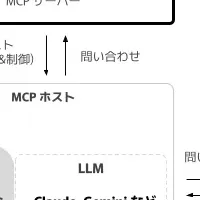
Avionics Market Projected to Hit $82.33 Billion by 2030, Says MarketsandMarkets™
Avionics Market Growth Insights
The avionics market is anticipated to reach an impressive USD 82.33 billion by 2030, growing from USD 56.22 billion in 2025, reflecting a CAGR of 7.9%. This growth is detailed in a new report from MarketsandMarkets™, highlighting several key factors that are shaping the future of this dynamic industry.
Key Drivers of Growth
The expansion of the avionics market is significantly influenced by rapid technological advancements, particularly in artificial intelligence and data analytics. These technologies contribute to enhanced efficiency and safety in aviation operations. As the aviation sector increasingly turns towards connected and autonomous aircraft, the demand for advanced avionics systems is surging.
Additionally, the industry's transition towards sustainable practices is driving innovation. In a market where safety and efficiency are paramount, the adoption of cutting-edge avionics technology is becoming essential. The ongoing geopolitical shifts and the emergence of new markets are also crucial elements that promote a favorable market outlook.
Moreover, airlines and manufacturers are making substantial investments in advanced solutions to meet the evolving needs of the industry. This heightened interest in innovation positions the avionics market as a leader in shaping the future of aviation technology.
Specialized Mission Aircraft Segment
A noteworthy segment contributing to the market's growth is that of specialized mission aircraft, which is expected to be the fastest-growing segment in the coming years. Factors driving this growth include a rising need for mission-specific solutions in surveillance, reconnaissance, and disaster response operations. Governments and defense organizations are increasingly investing in specialized aircraft, recognizing the significant capabilities that advanced avionics systems can provide, including sophisticated communication, navigation, and sensor technologies.
Power and Data Management Solutions
Equally important is the expected growth of power and data management systems, sparked by the complexity and demand for efficient energy use in aircraft. As avionics technology evolves, there is a pressing need for integrated systems that can handle the diverse requirements of various components within an aircraft's avionics suite. Power and data management solutions are crucial for optimizing performance, enhancing fuel efficiency, and ensuring the reliability of avionics systems, ultimately reducing operational costs.
North America's Leading Role
Looking at geographical trends, North America is projected to lead the avionics market during the forecast period. The region's technological advancements, including the implementation of NextGen air traffic systems, necessitate avionics upgrades across fleets. Renowned companies like Honeywell, Collins Aerospace, and Garmin are key players in this market, contributing significantly to global innovation and exports in avionics.
The demand for certified retrofits in aging aircraft remains strong, supported by a proactive regulatory framework established by the Federal Aviation Administration (FAA). The high adoption of system enhancements like Automatic Dependent Surveillance-Broadcast (ADS-B) and satellite navigation has led to an increase in the replacement of outdated avionics systems, cementing North America's position as a global leader in avionics testing, certification, and development.
Leading Companies in Avionics
Several influential companies dominate the avionics market landscape, including RTX, Honeywell International Inc., L3Harris Technologies Inc., General Electric, Thales, and others. These companies boast robust distribution networks across key global regions including North America, Europe, Asia Pacific, and beyond, reinforcing the market's expansive reach and growth potential.
With the avionics market on an upward trajectory, industry stakeholders are urged to stay abreast of technological advancements that can sustain their competitive edge and meet the unique demands of an evolving market landscape. As the aviation industry continues to innovate and adapt, the future of avionics appears promising and integral to the overall success of global aviation efforts.
Topics Business Technology)










【About Using Articles】
You can freely use the title and article content by linking to the page where the article is posted.
※ Images cannot be used.
【About Links】
Links are free to use.